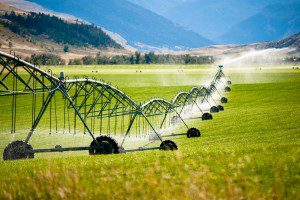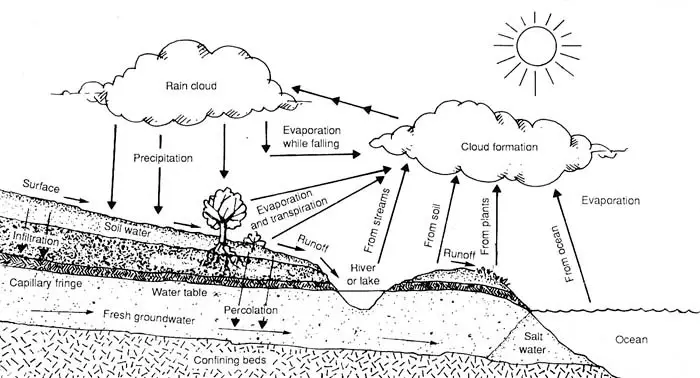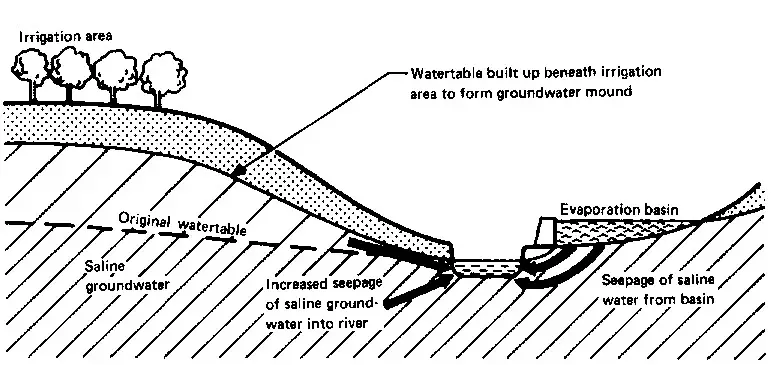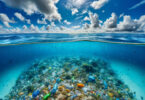27th August 2015
Guest Writer for Wake Up World
Water is the most important compound, making up between 50% and 65% of our body mass. It also comprises 70% of the entire Earth. Though water is the most abundant resource on planet Earth, only about 1% of water is considered safe for immediate human consumption.
Today, our society is facing a huge agricultural water problem. Water quality is rapidly decreasing as a result of human activities such as deforestation, mining and dumping of chemicals waste generated by factories into water sources such as oceans, rivers and lakes. In this article, we explore the actual agricultural problem we’re facing today, its causes and how this problem can be solved.
Defining the Agricultural Water Problem
Water is increasingly becoming scarce and the failure to use freshwater appropriately poses serious risks to sustainable development. Despite its limited supply, there is a widespread tendency to misuse water. Of great concern is people’s failure to appreciate the fact that water supply is finite and competition for limited water resources between industrialization, urbanization and agriculture has already started constraining development in most countries.
The World Wild Fund (WWF) statistical estimates show that out of the 2,500 trillion liters of water used in agriculture each year, about 1,500 trillion liters go to waste. In major basins, the quality of surface water is deteriorating rapidly as a result of chemical usage in soils in the form of fertilizer and exposure to other industrial and urban waste. In addition, groundwater gets polluted as a result of contaminated surface water seeping into the ground. Aquifers are increasingly losing their ability to hold water due to over-exploitation and reduction of forested land to facilitate recharging of ground water.
Causes of Agricultural Water Problem
Poor Planning on Water Usage
In many cases, commercial farmers use unsustainable agricultural practices that do not involve allocation of water for various uses. This leads to wastage of huge amounts of water on a daily basis. Though in any country irrigation projects are meant to be heavily subsidized economic projects, the failure to recognize that water is increasingly scarce and the most valuable resource hampers efforts to effectively plan for usage of available resources to generate maximum outputs. This is of great concern considering the fact that the source of water is limited.
Chemical Usage and Poor Waste Management
The main source of water pollution is commercial farming. This is mainly as a result of storage and disposal of animal waste and manure leaking into water bodies such as rivers. Other than that, manure is sprayed onto fields and agricultural farms as a fertilizer but the soil can only absorb a certain amount. Once the limit is reached, the remnants of the manure will seep into the water systems, polluting them.
In addition, the widespread use of toxic pesticides in non-organic farming adds considerably to the contamination of soil and water. Notably, Monsanto’s Roundup, an integral part of GMO agriculture, has become a disturbingly common contaminant in our air, water, rain, soil and food supplies.
Competition for Water Resources
Competition between agriculture, industries and cities for limited water supplies is already constraining development efforts in many countries and limiting the availability of drinking and agricultural water supplies. As populations and economies expand in growth, competition for limited water resources tends to intensify leading to conflicts among water users. As a result, farmers in drought-striken California, for example, are turning to tainted oil-industry wastewater for crop irrigation.
Per capita water availability by region, 1950-2000
| Region | 1950 | 1960 | 1970 | 1980 | 2000 |
| (………………………’000 m3.……………………..) | |||||
| Africa | 20.6 | 16.5 | 12.7 | 9.4 | 5.1 |
| Asia | 9.6 | 7.9 | 6.1 | 5.1 | 3.3 |
| Latin America | 105.0 | 80.2 | 61.7 | 48.8 | 28.3 |
| Europe | 5.9 | 5.4 | 4.9 | 4.4 | 4.1 |
| North America | 37.2 | 30.2 | 25.2 | 21.3 | 17.5 |
(Source: N.B. Ayibotele. 1992. The world’s water: assessing the resource. Keynote paper at the ICWE, Dublin, Ireland.)
Absence of Trace Minerals
The absence of any trace mineral can cause deficiencies or excesses of nutrients. This fact could cause an organism to become dormant until the right environment or circumstance is available to enable it undertake its function.
According to Liebig’s law of the minimum, productivity and growth of crops are increased by the scarcest and rarest trace mineral and not by the mineral whose amounts are huge. This has an impact on water quality with trace sulfate minerals such as magnesium sulfate, iron sulfate, potassium and others help increase agricultural produce.
Effects of Agricultural Water Problems
Accessibility and Health Challenges
An approximated 2.5 billion people, which is about a third of the entire global population, do not have access to proper sanitation. In addition, 780 million people across the globe have no access to clean water. These challenges provide a breeding ground for waterborne diseases resulting to diarrhea deaths. Water that is contaminated by agricultural chemicals causes severe health problems in human beings including lung and respiratory tract infections, stomach ulcers and kidney diseases. Due to inability of cities to provide sufficient drinking water and adequate sanitation facilities to residents, millions of people across the globe get infected by waterborne diseases caused by parasites such as guinea worms.
Endangers Aquatic Life
When chemicals from fertilizers find their way into groundwater and other water systems, the repercussions are devastating on both ecosystems and human beings. Parasites and bacteria that find their way into marine ecosystems pollute aqua life as well as other animals that depend on that water. Fertilizer chemicals and manure in the water reduces oxygen levels in the water resulting to loss of aquatic life and destruction of marine ecosystems like freshwater lakes, rivers and coral reefs.
Low Productivity in Irrigated Lands
Salinization and waterlogging are increasingly reducing productivity levels of irrigated lands. Out of all the water that is withdrawn from lakes, aquifers and rivers is used for irrigation. As much as agriculture is the largest water consumer in the world in terms of volumes, it is a relatively low-efficient, low-value and extremely subsidized user. Countries such as Mexico, Indonesia, China and India have in the past invested heavily in agriculture. However, irrigation indicators show a shortfall in agricultural yields as well as the technical efficiency of water usage. About 60% of all the water that is pumped or diverted to irrigated regions goes to waste. Though some of these losses are basically inevitable, often the excess water tends to seep back in to the ground resulting to salinity and clogging. Though about 25% of irrigated land within developing countries experiences varying salinization degrees, poor irrigation drainage and stagnant water compound the problem of waterborne diseases leading to high health costs and human suffering.
Solving the Agricultural Water Problem
Government Regulations
Governments need to put strict environmental and waste management laws in place and monitor industries and local farms more regularly to ensure that they comply with the provisions there in. This will keep water levels and soil pollution in check.
Encourage Organic Farming
As much as organic farming is more costly, it produces healthier foods that are free from chemicals. Consumers also should consider buying from small local farms as opposed to larger farms whose pesticide usage is extremely high
Encourage Sustainable Agriculture
Farmers should be encouraged to adopt sustainable agricultural practices that are friendly to the environment. Information on natural ways of pest control need to be provided to farmers and the general public as well. As children grow up, they need to be taught how to take care of the environment. (You can learn more about sustainable home agriculture here.)
Governments must also consider offering tax incentives to small and commercial farms that practice Earth-friendly agricultural approaches, as well as banning toxic pesticides that are contributing to the problem.
Encourage Water Catchment
Governments should consider encouraging people to harvest rain water and include rainwater harvesting infrastructure during construction, as a way of reducing water wastage. Where need be, water catchment areas such as dams should be constructed for purposes of harvesting and storing rain water that can be used for activities such as irrigation, when need arises.
About the author
“I do not GO through life, I GROW through life!” ~ Mark W. Boutwell

If you've ever found value in our articles, we'd greatly appreciate your support by purchasing Mindful Meditation Techniques for Kids - A Practical Guide for Adults to Empower Kids with the Gift of Inner Peace and Resilience for Life.
In the spirit of mindfulness, we encourage you to choose the paperback version. Delve into its pages away from screen glare and notifications, allowing yourself to fully immerse in the transformative practices within. The physical book enriches the learning process and serves as a tangible commitment to mindfulness, easily shared among family and friends.
Over the past few years, Wake Up World has faced significant online censorship, impacting our financial ability to stay online. Instead of soliciting donations, we're exploring win-win solutions with our readers to remain financially viable. Moving into book publishing, we hope to secure ongoing funds to continue our mission. With over 8,500 articles published in the past 13 years, we are committed to keeping our content free and accessible to everyone, without resorting to a paywall.










